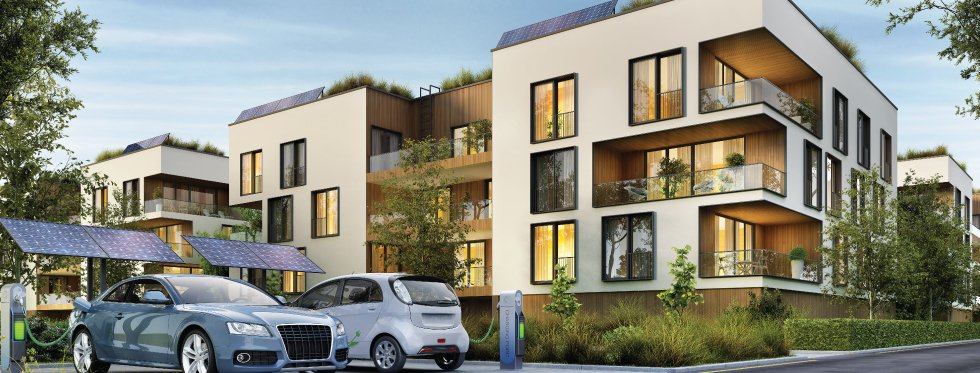
More than ever before, buyers are looking for innovative features to make their homes more efficient and convenient. Developers who include these technological initiatives are able to attract buyers more easily and secure their reputation as an industry leader.
Many of these initiatives also help achieve a more harmonious and cost-effective Owners Corporation through improved communication, security and efficiency, thus securing the long-term satisfaction of residents.
Find out more about The Knight’s developer consulting services >
1. Smart Home automation.
Something we can expect to see even more of in the future is the promotion of Smart Home (or in this case, Smart Building) automation as a selling point.
Smart Home automation includes the ability to control climate, lighting and audio-visual devices from around your house and even remotely via smart phone apps.
Smart Home automation isn’t just about convenience though. It can also promote reduced energy consumption by setting heating and cooling to only work when it’s needed and turning off all lights or appliances when no one is home.
In a strata building, this can include the common areas, helping to keep bills down and saving prospective buyers on their OC levies.
Access control systems.
Smart Access systems are a logical inclusion for developers looking to create secure buildings that prospective buyers can feel safe in.
Traditional access systems can be a great cause of stress in larger buildings. Security breaches due to lost fobs or keys are a real concern for some Owners Corporations, particularly in buildings with high tenant turn over or short stay accommodation. Not to mention the cost and inconvenience to the Owners Corporation of reprogramming fobs or re-cutting keys.
A centrally controlled Smart Access system can remove all these issues, plus give the Owners Corporation control over who is able to access common areas.
A few examples of Smart Access options include:
- Smart Phone activated locks
- Facial recognition activated locks
- Vehicle number plate recognition
The Internet of Things.
The Internet of Things (IoT) is a system of connected devices, mechanical and digital machines, objects, animals or people that are provided with unique identifiers (UIDs) and the ability to transfer data over a network without requiring human interaction.
For example, some apartment buildings can now recognise when a resident arrives to the building, promptly sending a notification to the concierge, and providing push notifications to the resident’s smart phone where needed e.g. a package has arrived.
Developers who include the most innovative applications of IoT technology in their projects will be able to tout a ‘future-is-now’ experience to potential buyers.
2. Electric vehicle charging stations.
As electric vehicles (EVs) become more popular and more affordable, the demand on a building’s power supply is likely to increase significantly.
Even if prospective buyers don’t yet own EVs, savvy developers are future proofing their projects by factoring in dedicated charging ports and related considerations. Considering Vehicle to Home (V2H) or Vehicle to Grid (V2G) set up could support the building’s power needs during peak periods (or during power outages).
3. Drone landing pads.
Commercial use of drones is closer than people think, with some predicting that soon drones will be commonplace for deliveries and transport.
Buildings which factor this into their design will be ahead of the curve when the technology rolls out and ensure a lifestyle of convenience for residents.
As drones will require safe places to land with easy access for residents, neglecting this not-so-distant future might make their uptake difficult and exclude residents from the benefits.
4. Building management software.
This may not seem like something to be considered at development stage, however including a Building Management software from day one can benefit everyone.
Building Management Software allows for smooth communication between the Owners Corporation Manager, Building Manager, Developer, Real Estate Agents and Owners/Tenants.
It provides an easy channel for building defects to be reported and handled, common facilities to be booked and managed and a centralised location for all building information.

